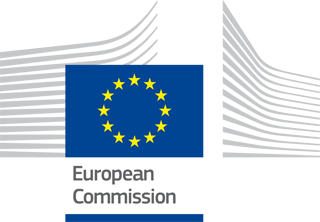

News
Side Event organized with Montenegro at the Biological Weapons Review Conference on the National CBRN Action Plans
Geneva, 10 November 2016.


Funded by the European Union
Side Event organized with Montenegro at the Biological Weapons Review Conference on the National CBRN Action Plans
Palais des Nations, United Nations Office at Geneva
The Government of Montenegro and the United Nations Interregional Crime and Justice Research Institute (UNICRI) organized a Side Event at the Eighth Review Conference of the Biological Weapons Convention (BWC) entitled “Identifying Needs and Providing Tailored Solutions: The Experience of the National CBRN Action Plans.”
The Event was held on 10 November 2016 at the Palais des Nations in Geneva. The Side Event was an opportunity to highlight the benefits of developing and implementing National Action Plans for strengthening Chemical, Biological, Radiological and Nuclear (CBRN) risk mitigation capacities.
More than 20 countries have developed National Action Plans in the context of the European Union (EU) CBRN Risk Mitigation Centres of Excellence Initiative, which is funded by the European Commission and implemented by UNICRI and the Joint Research Centre of the European Commission.
The Side Event was opened by Mr. Milorad Šćepanović, Ambassador of Montenegro to the United Nations and other International Organizations in Geneva. Opening remarks were also given by Dr. Emil Kazakov of the European External Action Service and Mr. Francesco Marelli, Head of UNICRI’s CBRN Risk Mitigation and Security Governance Programme. Ambassador Šćepanović underlined the importance of the National CBRN Action Plan and informed participants that Montenegro had submitted a Working Paper to the Eighth BWC Review Conference together with several other state parties. He highlighted the advantages of the National Action Plans in terms of strengthening the BWC implementation.
During the Side Event speakers from the Governments of Montenegro, the Philippines and Kenya, the Centre for Biosecurity and Biopreparedness and the International Science and Technology Center (ISTC) all emphasized how the National CBRN Action Plans are improving national and international coordination and enhancing capacity building in relation to preventing the risks of CBRN materials.
The key purpose of the National Action Plan is to articulate a national vision for CBRN risk mitigation and to identify priorities for strengthening capacities in this area. It also facilitates the identification and implementation of projects and ensures that capacity building is part of a coordinated and sustainable approach. Developing a National Action Plan is a voluntary activity based on a bottom-up approach entirely led by the countries who decide which information to include in the NAP and how it will be used.
The event also offered an opportunity to look at some of the results achieved by the projects implemented in different partner countries within the framework of the EU CBRN Risk Mitigation Centres of Excellence initiative that have helped support the capacity building objectives of partner countries.
The EU CBRN Centres of Excellence initiative: Created and funded by the EU, the Initiative has established a framework for cooperation and coordination across all levels of government and amongst international partners, such as IAEA, OPCW, BWC ISU, 1540 Committee, WHO and other relevant actors. The Initiative facilitates regional cooperation to enhance CBRN capabilities and currently involves 55 countries in 8 regions of the world, namely: the African Atlantic Façade; Central Asia; Eastern and Central Africa; the Gulf Cooperation Countries; the Middle East; North Africa and Sahel; South East Asia; and South East and Eastern Europe.
For more information: CBRN Centres of Excellence website: http://www.cbrn-coe.eu/


Geneva, 10 November 2016.


Funded by the European Union
Side Event organized with Montenegro at the Biological Weapons Review Conference on the National CBRN Action Plans
Palais des Nations, United Nations Office at Geneva
The Government of Montenegro and the United Nations Interregional Crime and Justice Research Institute (UNICRI) organized a Side Event at the Eighth Review Conference of the Biological Weapons Convention (BWC) entitled “Identifying Needs and Providing Tailored Solutions: The Experience of the National CBRN Action Plans.”
The Event was held on 10 November 2016 at the Palais des Nations in Geneva. The Side Event was an opportunity to highlight the benefits of developing and implementing National Action Plans for strengthening Chemical, Biological, Radiological and Nuclear (CBRN) risk mitigation capacities.
More than 20 countries have developed National Action Plans in the context of the European Union (EU) CBRN Risk Mitigation Centres of Excellence Initiative, which is funded by the European Commission and implemented by UNICRI and the Joint Research Centre of the European Commission.
The Side Event was opened by Mr. Milorad Šćepanović, Ambassador of Montenegro to the United Nations and other International Organizations in Geneva. Opening remarks were also given by Dr. Emil Kazakov of the European External Action Service and Mr. Francesco Marelli, Head of UNICRI’s CBRN Risk Mitigation and Security Governance Programme. Ambassador Šćepanović underlined the importance of the National CBRN Action Plan and informed participants that Montenegro had submitted a Working Paper to the Eighth BWC Review Conference together with several other state parties. He highlighted the advantages of the National Action Plans in terms of strengthening the BWC implementation.
During the Side Event speakers from the Governments of Montenegro, the Philippines and Kenya, the Centre for Biosecurity and Biopreparedness and the International Science and Technology Center (ISTC) all emphasized how the National CBRN Action Plans are improving national and international coordination and enhancing capacity building in relation to preventing the risks of CBRN materials.
The key purpose of the National Action Plan is to articulate a national vision for CBRN risk mitigation and to identify priorities for strengthening capacities in this area. It also facilitates the identification and implementation of projects and ensures that capacity building is part of a coordinated and sustainable approach. Developing a National Action Plan is a voluntary activity based on a bottom-up approach entirely led by the countries who decide which information to include in the NAP and how it will be used.
The event also offered an opportunity to look at some of the results achieved by the projects implemented in different partner countries within the framework of the EU CBRN Risk Mitigation Centres of Excellence initiative that have helped support the capacity building objectives of partner countries.
The EU CBRN Centres of Excellence initiative: Created and funded by the EU, the Initiative has established a framework for cooperation and coordination across all levels of government and amongst international partners, such as IAEA, OPCW, BWC ISU, 1540 Committee, WHO and other relevant actors. The Initiative facilitates regional cooperation to enhance CBRN capabilities and currently involves 55 countries in 8 regions of the world, namely: the African Atlantic Façade; Central Asia; Eastern and Central Africa; the Gulf Cooperation Countries; the Middle East; North Africa and Sahel; South East Asia; and South East and Eastern Europe.
For more information: CBRN Centres of Excellence website: http://www.cbrn-coe.eu/





